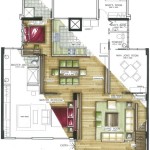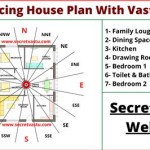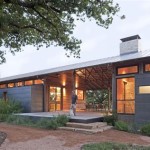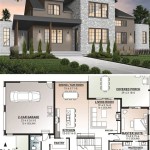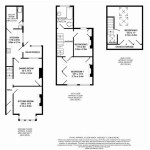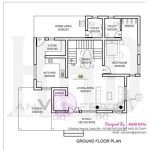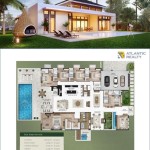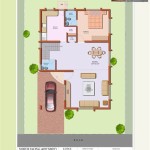Small Bungalow House Plan: Design, Benefits, and Considerations
The small bungalow house plan represents a popular choice for homeowners seeking affordability, efficiency, and a comfortable living space within a compact footprint. Characterized by its low-pitched roof, horizontal emphasis, and often a prominent front porch, the bungalow style offers a blend of practicality and aesthetic appeal. This article explores the key aspects of small bungalow house plans, examining their design characteristics, the benefits they offer, and several critical considerations to keep in mind during the planning process.
Bungalows originated in India and were adapted and popularized in the United States during the early 20th century. Their widespread appeal stemmed from their accessibility to middle-class families and their emphasis on simple yet well-crafted design. Today, small bungalow house plans continue to attract homeowners due to their adaptability to various lifestyles and their potential for sustainable and cost-effective living.
The term "small" in the context of a bungalow house plan typically refers to a square footage ranging from under 1000 to around 1500 square feet. This size range necessitates careful space planning and efficient utilization of every room. Successful small bungalow designs prioritize functionality and a sense of openness to maximize the perceived living area.
Key Design Characteristics of Small Bungalow House Plans
Several defining features distinguish small bungalow house plans from other architectural styles. These elements contribute to the overall aesthetic and functionality of the home.
Low-Pitched Roof: This is perhaps the most recognizable feature of a bungalow. The low-pitched roof, often with wide eaves, provides shade and protection from the elements. Gables and dormers are often incorporated to add visual interest and provide additional headroom in attic spaces, which can be utilized for storage or even a small living area.
Horizontal Emphasis: Bungalows are characterized by their horizontal lines, which create a sense of groundedness and stability. This is often achieved through long, low rooflines, wide porches, and the use of horizontal siding. The emphasis on horizontal lines contributes to the bungalow's relaxed and approachable aesthetic.
Prominent Front Porch: The front porch is an integral part of the bungalow design, serving as an outdoor living space and a welcoming entry point. Porches are often covered and supported by sturdy columns, adding to the bungalow's character. The porch facilitates interaction with neighbors and provides a space for relaxation and enjoyment of the surroundings.
Open Floor Plans: To maximize space and create a sense of openness, small bungalows often feature open floor plans that connect the living room, dining area, and kitchen. This layout allows for better flow of traffic and natural light throughout the home. Thoughtful zoning of these areas can help define individual spaces within the larger open area.
Built-in Features: Bungalows often incorporate built-in features such as bookcases, cabinets, and window seats. These features not only save space but also add to the functionality and charm of the home. Built-in elements can be customized to suit the specific needs and preferences of the homeowner.
Natural Materials: Bungalows typically feature natural materials such as wood, stone, and brick. These materials contribute to the bungalow's warm and inviting character. Wood siding, shingle roofs, and stone accents are common elements in bungalow design.
Large Windows: While maintaining privacy, small bungalows often incorporate large windows to maximize natural light and create a connection with the outdoors. Well-placed windows can brighten the interior and make the small space feel larger and more inviting.
Benefits of Choosing a Small Bungalow House Plan
Opting for a small bungalow house plan offers several advantages, making it an attractive option for various lifestyles and budgets.
Affordability: Smaller square footage translates to lower construction costs, making small bungalows a more affordable option than larger homes. Reduced material costs, labor requirements, and property taxes contribute to the overall cost savings. This affordability makes homeownership accessible to a wider range of individuals and families.
Efficiency: Small bungalows are inherently more energy-efficient than larger homes. Less space requires less heating and cooling, resulting in lower utility bills. Efficient insulation, energy-efficient windows, and sustainable building materials can further enhance energy efficiency. The smaller footprint also reduces the environmental impact of the home.
Easy Maintenance: The smaller size of a bungalow makes it easier and less time-consuming to maintain. Cleaning, repairs, and landscaping are all simplified, allowing homeowners to spend less time on upkeep and more time enjoying their home. This is particularly appealing to busy individuals and those looking for a low-maintenance lifestyle.
Cozy and Comfortable Living: The compact size of a bungalow creates a sense of intimacy and coziness. The open floor plan and thoughtful design contribute to a comfortable and inviting living space. Smaller spaces can often feel more personal and welcoming than larger, more expansive homes.
Adaptability: Small bungalow house plans can be adapted to suit various lifestyles and needs. They can be customized with different layouts, finishes, and features to create a personalized living space. Bungalows can be designed for aging in place, with accessible features such as wider doorways and grab bars. They can also be adapted for families with children, with play areas and child-friendly features.
Sustainable Living: Small bungalows promote sustainable living by reducing resource consumption and minimizing environmental impact. The smaller footprint requires less land and fewer building materials. The focus on energy efficiency reduces energy consumption and greenhouse gas emissions. Sustainable building materials and practices can further enhance the environmental benefits of a small bungalow.
Close-Knit Community: The bungalow style often fosters a sense of community due to its front porch design and its prevalence in older, established neighborhoods. The front porch encourages interaction with neighbors and creates a welcoming atmosphere. Bungalow neighborhoods often have a strong sense of community and a friendly, neighborly atmosphere.
Considerations When Planning a Small Bungalow House
While small bungalow house plans offer numerous benefits, it is crucial to consider several factors during the planning process to ensure a successful outcome.
Space Planning: Efficient space planning is essential in a small bungalow. Carefully consider the layout of each room and how it will be used. Maximize storage space through built-in features and smart organization solutions. Consider incorporating multi-functional furniture and flexible spaces to adapt to changing needs. Prioritize functionality and flow to create a comfortable and livable space.
Storage Solutions: Storage can be a challenge in a small home. Maximize storage space by utilizing vertical space with shelves and cabinets. Consider under-bed storage, attic storage, and garage storage. Look for furniture with built-in storage compartments. Declutter regularly to minimize the amount of belongings that need to be stored. A well-organized home will feel larger and more comfortable.
Natural Light: Maximize natural light to make the small space feel larger and brighter. Use large windows and skylights to bring in natural light. Choose light-colored paint and finishes to reflect light. Avoid heavy curtains or blinds that block natural light. Position mirrors strategically to reflect light and create the illusion of more space. Natural light can significantly enhance the livability of a small home.
Ventilation: Proper ventilation is crucial for maintaining a healthy and comfortable indoor environment. Ensure adequate ventilation through windows, doors, and ventilation systems. Install exhaust fans in bathrooms and kitchens to remove moisture and odors. Consider cross-ventilation to create natural airflow. Proper ventilation can prevent the buildup of moisture and pollutants, improving indoor air quality and comfort.
Outdoor Space: Since the interior space is limited, consider maximizing the use of outdoor space. Create a comfortable outdoor living area with a patio, deck, or garden. Extend the living space outdoors with outdoor furniture, lighting, and landscaping. A well-designed outdoor space can significantly enhance the enjoyment of a small bungalow home. The front porch serves as a key transitional space between the interior and exterior.
Building Codes and Regulations: Ensure that the bungalow design complies with all applicable building codes and regulations. Obtain necessary permits and approvals before starting construction. Consult with a qualified architect or builder to ensure compliance with all requirements. Failure to comply with building codes can result in costly delays and penalties.
Budget: Establish a realistic budget and stick to it throughout the planning and construction process. Obtain multiple bids from contractors and suppliers to ensure competitive pricing. Prioritize essential features and finishes and make compromises where necessary. Unexpected costs can arise during construction, so it's wise to have a contingency fund.
Professional Consultation: Consulting with an architect, designer, or builder is highly recommended when planning a small bungalow house. A professional can provide valuable insights and guidance on design, space planning, and construction techniques. They can help optimize the layout, maximize space utilization, and ensure that the design meets all functional and aesthetic requirements. Their expertise can help prevent costly mistakes and ensure a successful outcome.
In conclusion, a well-designed small bungalow house plan provides a viable option to combine affordability, practicality, and aesthetic appeal. Consideration of the design characteristics, an understanding of the inherent benefits, and careful deliberation of the critical considerations will lead to a successful small bungalow project delivering comfort, efficiency, and satisfaction for the homeowner.

Small Bungalow House Plans We Love Blog Dreamhomesource Com

Small Bungalow House Plans We Love Blog Dreamhomesource Com

Your Guide To Bungalows What Is A Bungalow House And More Houseplans Blog Com

Small Bungalow Cottage House Plan With Porches And Photos

Bungalow House Plans We Love Blog Homeplans Com

Bungalow Floor Plans Style Homes Arts And Crafts Bungalows House Design

Small Bungalow House Plans

Small Bungalow House Plans We Love Blog Dreamhomesource Com

Three Simple But Charming Bungalow Designs With Bedrooms Ulric Home Beautiful House Plans Model Plan Small Blueprints

27 Adorable Free Tiny House Floor Plans Craft Mart

